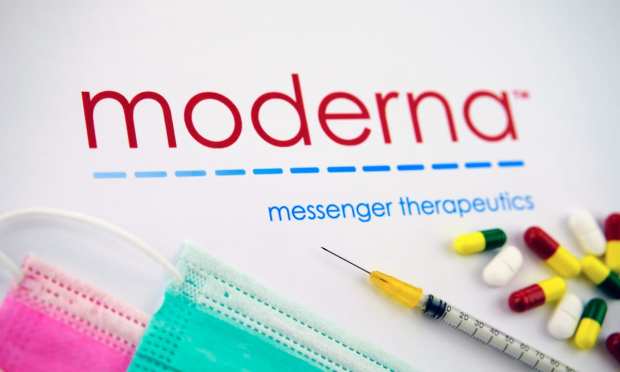Moderna Solved The Supply Chain Problem, But Will Consumers Embrace A COVID-19 Vaccine?

With COVID-19’s worldwide case count officially exceeding 11 million and waves of closures sweeping U.S. states in an attempt to stifle the resurgent threat, an island of good news has appeared in what looks increasingly like a sea of bad tidings. Following Pfizer’s announcement last week of a COVID-19 vaccine showing 90 percent effectiveness in clinical trials, U.S. biotech firm Moderna announced on Monday (Nov. 16) that its rival vaccine boasts a 94.5 percent efficacy rate.
“It is absolutely amazing to be able to develop this vaccine and see the ability to prevent symptomatic disease with such high efficacy,” Dr. Tal Zaks, Moderna’s chief medical officer, told CNN.
Moderna also said that thus far, its mRNA vaccine didn’t show signs of serious side effects for those who took it in clinical trials. And unlike Pfizer’s vaccine, Moderna’s variation doesn’t require sub-zero storage temperatures to remain stable.
It can also be safely transported and stored for 30 days at temperatures achievable with standard refrigerated shipping and commercial freezer storage. This makes Moderna’s vaccine both slightly more efficacious and much easier to distribute than Pfizer’s version.
That, in turn, slightly redefines a minor debate among experts as to when normalcy could return with a vaccine in play. As Karen Webster noted in her commentary this week, as of Sunday morning, top expert Dr. Anthony Fauci was saying that the United States could start to see general availability in the early part of 2021, with “some return to normalcy” in the late spring or summer.
Meanwhile, Dr. Josh Sharfstein, vice dean for public health and community engagement at the Johns Hopkins Bloomberg School of Public Health, offered a more pragmatic view that the vaccine wouldn’t be available to the general public until as late as next fall – meaning normalcy could be on hold until the end of 2021.
Webster wrote: “If that’s the case, it’s likely that 2021 will be a year of transition, where the population remains masked and socially distant as people get vaccinated — and hopefully, enough of them do so to achieve the level of herd immunity required to make COVID a part of our past and not a persistent part of our present.”
However, a highly effective vaccine that doesn’t require specialized transportation or storage might change the math on distributing the substance more widely and quickly. That, in turn, could greatly shorten the period between the pandemic and the post-pandemic.
Consumers’ Complicated Relationship to a Vaccine
But as PYMNTS’ most recent consumer studies indicate, that won’t necessarily happen. Because as important as a vaccine is to consumers returning to their pre-pandemic habits, the rush to actually get vaccinated isn’t quite as powerful as one might assume.
When surveyed by PYMNTS in the days after the Pfizer vaccine news broke last week, consumers showed a high level of awareness, with eight in 10 respondents reported having at least some knowledge of it. PYMNTS also found that a fair number – 37.9 percent – “strongly” plan to get vaccinated. But they’re slightly outnumbered by the 38.4 percent of people who say they “definitely” or “probably” won’t.
The cohort of those planning to skip the vaccine is more heavily comprised of younger consumers. For instance, 40 percent of Generation Z respondents said they were unlikely to get the vaccine versus 32.7 percent of baby boomers who reported the same.
The non-vaccination set is also made up heavily of consumers who have minimally shifted their lives to digital during the pandemic, meaning they’re still primarily shopping in physical stores, eating in restaurants and carrying on with their pre-pandemic habits.
That’s either out of choice or due to a lack of technology to access other options. Among the 53 percent of consumers who fit in that category, only about 25 percent have plans to get a vaccine once it becomes available.
By contrast, consumers whom PYMNTS have termed “digital shifters” – those who have largely shifted their working, shopping, eating and entertainment procurement to digital channels – are very enthusiastic about a vaccine. Nearly two-thirds of them (64 percent) reported that they’re “somewhat likely,” “very likely” or “extremely likely” to get vaccinated.
However, a vaccine won’t fully push them back to old habits, as some 80 percent report plans to carry on with their digitized lives even when this is all over. However, PYMNTS data show that when it comes to certain things – like seeing friends and family, going to concerts and actually going out to eat – there’s a lot of pent-up demand waiting for a vaccine to relieve it.
The Long Walk Back to Normal
The trouble is that with only about one-third of consumers planning to get vaccinated, a vaccine will have a hard time releasing that pent-up demand. That’s because doctors and epidemiologists define “herd immunity” as 70 percent of a population being immune to a disease.
Even with a vaccine that’s nearly 95 percent effective, roughly 80 percent of the U.S. population will need immunization for America to reach herd immunity. That’s not happening if 38 percent of the population says it plans to opt out.
Of course, consumer sentiment can change. PYMNTS has been documenting eight months’ worth of COVID-19 consumer opinion, and our latest figures are already a week behind the Moderna news.
But what’s true is that as of this moment, nearly 250,000 Americans have died of COVID-19, a figure that some expect will double to 500,000 by February. That means the challenge for innovators might not be just developing a vaccine, but finding a way in the coming months to flip all of those people who are “somewhat likely” or “not very likely” to take a vaccine into those who are “likely” to do so.
